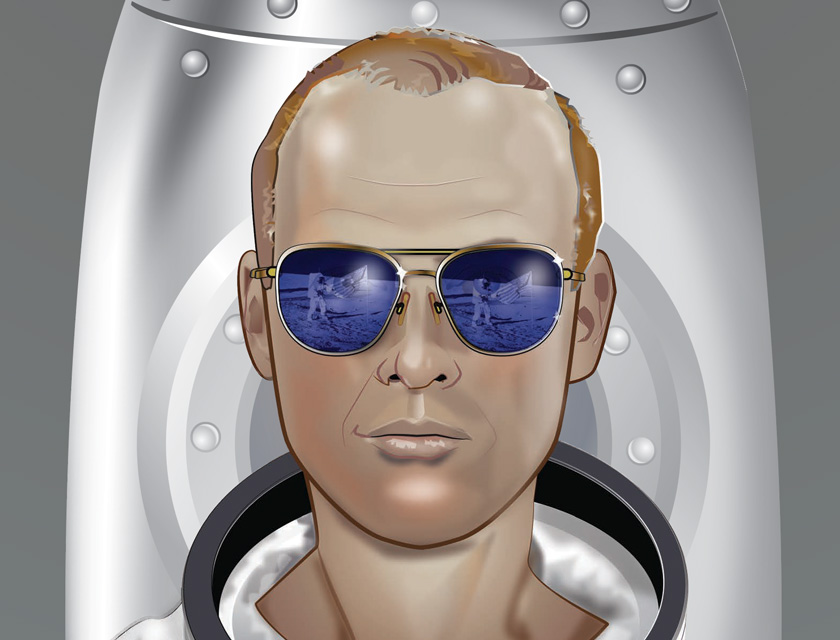“Whoopee! Man, that may have been a small one for Neil, but that’s a long one for me.”
Charles “Pete” Conrad’s exclamation-proclamation when he became the third person to walk on the moon certainly lacked the historic heft of Neil Armstrong’s “One small step for man, one giant leap for mankind.” But it was more colorful—and true to form.
Conrad’s Nov. 19, 1969, feat during the second Apollo moon mission, Apollo 12, marked the apex of an unlikely NASA career. He also was co-inventor of a significant satellite communications technology.
On June 2, 1930, he was born into a wealthy Philadelphia family that ultimately lost everything during the Great Depression. He had dyslexia and had to repeat the 11th grade but eventually turned things around academically and attended Princeton University, where he earned a degree in aeronautical engineering in 1953 to become the first Ivy League astronaut.
A talented pilot, Conrad was invited to apply for the astronaut program. But he chafed at its rigorous, invasive testing methods and was rejected. When his friend, Alan Shepard—who later walked on the moon as part of Apollo 14—recommended him to NASA years later, he re-applied and was selected in September 1962.
The gap-toothed, 5-foot-6-inch Conrad was the antithesis of the astronaut image, including his off-color and sometimes sarcastic personality. But his piloting talent and small frame made him a good fit in small spaces.
After being co-pilot on the Gemini 5 space flight and command pilot of Gemini 11, Conrad was part of the Apollo 12 flight crew with Richard Gordon and Alan Bean. This was four months after the historic Apollo 11 moon landing with Armstrong and Buzz Aldrin (the latter the second to walk on the moon).
During his four career space flights he logged 49 days, 3 hours and 37 minutes—a record at the time. In May 1973, he spent a record 28 days in space as commander of Skylab 2, the first manned space station.
Later that year, Conrad retired from the U.S. Navy and became an executive with the American Television and Communications Corp. He took an executive position with McDonnell-Douglas Corp. in 1978.
It was in 1978 that Conrad was presented the Congressional Space Medal of Honor by President Jimmy Carter. Other honors included two Navy Distinguished Service Medals and two Distinguished Flying Crosses.
Conrad slowed down little in retirement; his passions of motorcycle and auto racing were exactly his speed. On July 8, 1999, he died when he lost control of the motorcycle he was riding near Ojai, California. He was 69. (A New York Times obituary said he was wearing a helmet and going the speed limit.)
Part of his legacy was being co-inventor of a Multiple Access Satellite Communications Network to reduce the cost of satellite communication systems—a technology used for television, telephone, radio, internet, and military applications. The invention was granted U.S. Patent No. 5,940,739 on Aug. 17, 1999—five weeks after Conrad’s death.
In an interview with the PBS “Nova” program shortly before his death, he revealed that his unorthodox words when landing on the moon were planned—a bet he made with a journalist that comments made during moon walks were not scripted by the U.S. government. (He said the journalist never paid up.)
Requests for the USPTO trading cards can be sent to [email protected]. You can also visit them at uspto.gov/kids.


